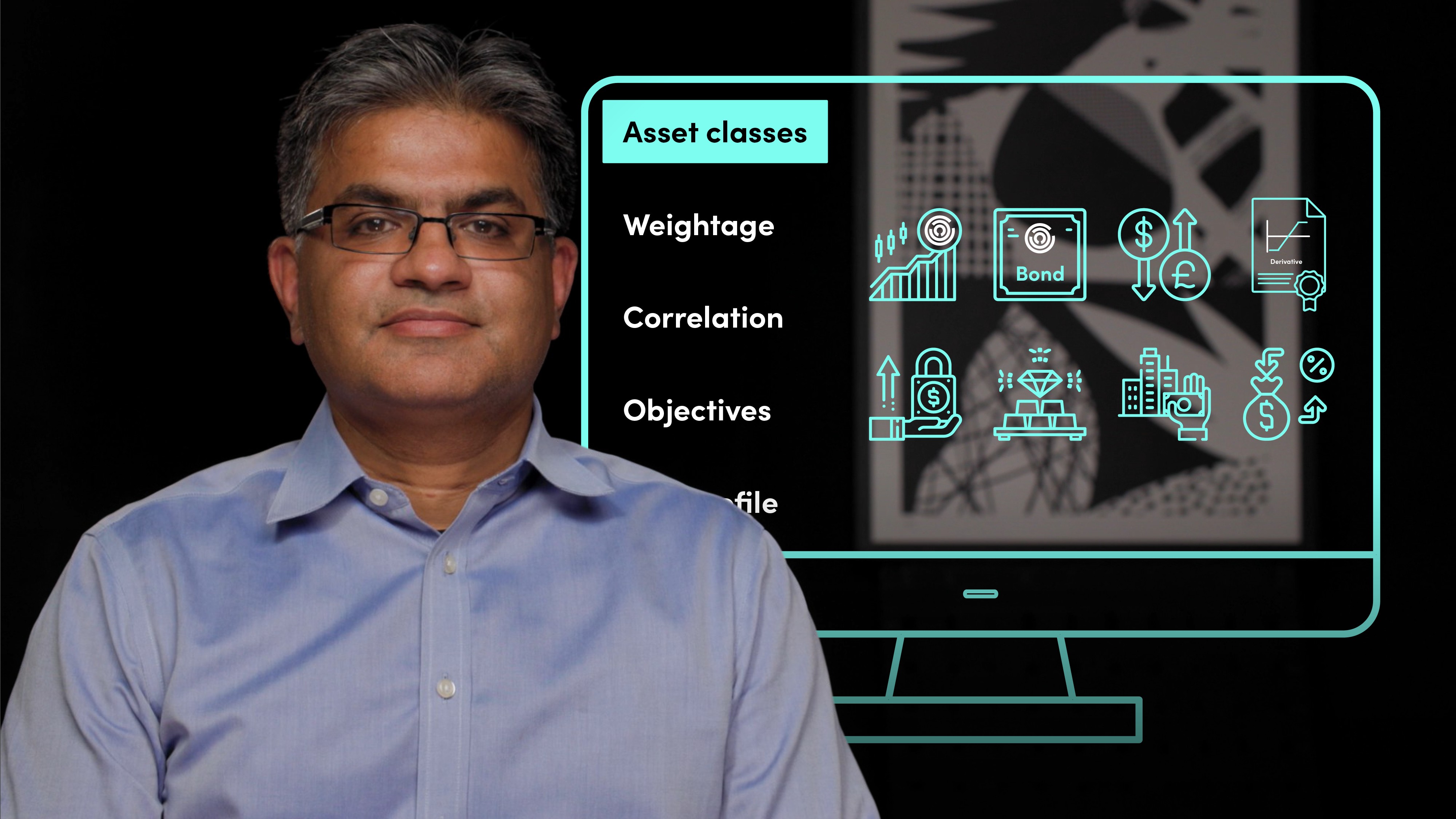
The Discretionary Portfolio Management Framework II

Faisal Sheikh
25 years: Wealth and risk management specialist
In the previous video, Faisal outlined the role of a portfolio manager and started talking about a framework they can use to manage portfolios. In this video, he carries on exploring this framework, starting with the importance of diversification.
In the previous video, Faisal outlined the role of a portfolio manager and started talking about a framework they can use to manage portfolios. In this video, he carries on exploring this framework, starting with the importance of diversification.

The Discretionary Portfolio Management Framework II
10 mins 8 secs
This video builds on the introduction to the portfolio management framework and discusses the remaining 4 out of the 5 stages in the framework : Portfolio diversification, monitoring and rebalancing, selecting individual investments and finally holistic assessments. These components all go hand in hand and help portfolio managers perform to the best of their ability and deliver satisfactory results to their clients. It also helps clients understand the portfolio management process and know that their money is being handled in a thorough manner.
Key learning objectives:
Understand the importance of portfolio diversification
Understand how selection of investments can dictate portfolio performance
Understand the importance of a holistic assessment
Outline the need for monitoring and rebalancing a portfolio
What is the need for diversification?
Empirical evidence shows that investment risk management is best achieved through an appropriate level of investment diversification. Volatility of international markets during events such as the global financial crisis, geopolitical conflicts and a global pandemic have explained the need for a well-diversified portfolio. Diversification best practice is to include investments that have a low or even negative correlation with each other such as equities and bonds or traditional asset classes with alternatives and also mix exposures to different groups including governments. This reduces the systematic risk of the portfolio failing and provides an inbuilt level of hedging.
Monitoring and rebalancing of a portfolio
As markets shift due to various global events, so will portfolio asset allocations. This will require a portfolio rebalancing or asset allocation plan to ensure that investors do not become gradually over-exposed to risks. To do this, firms will create a rebalancing policy where portfolios are rebalanced according to a set schedule (usually monthly, quarterly or after major market moves) to ensure the portfolio does not stray away from original goals.
Selection of investments
For a client to fully trust the people making individual investment selections in their portfolio, they need to know who is part of the team managing the portfolio and capabilities of the team and the portfolio manager. Clients also need to comprehend the philosophy being followed by the portfolio managers and this philosophy has to match the client’s personal goals. Only after this strategy is chosen, the portfolio manager can choose an appropriate selection of underlying investments. In choosing investments, consideration will also be given to expected performance (expected returns versus the risk taken) to determine under which market conditions this strategy would likely underperform or outperform the overall market. Two different investments within a single portfolio may have very different performance and hence this shows why the selection process is crucial to ensure top performing assets are included.
Holistic Assessment of Portfolios
Holistic evaluation of performance involves more than looking at recent returns (annualised performance). Other assessments include consistency of performance, risk management and performance relative to benchmarks and peers. Statistical measures such as Sharpe ratios indicate how much more or less risk has been taken by the portfolio manager in achieving their performance and again, allow comparison across other portfolios and benchmarks. Historical performance is even more important as a portfolio could have a one-off on one given year but may have performed poorly over 5 years.

Faisal Sheikh
There are no available videos from "Faisal Sheikh"

